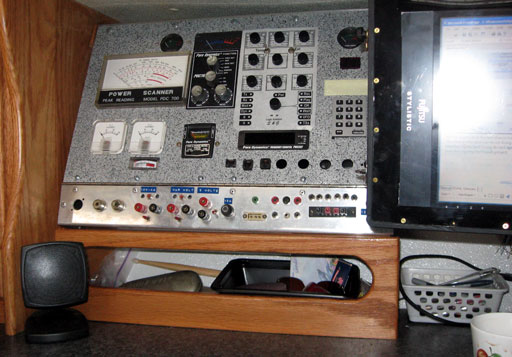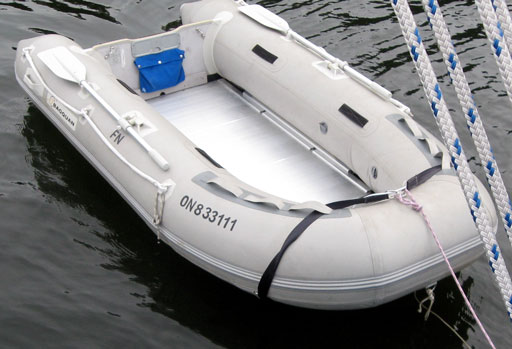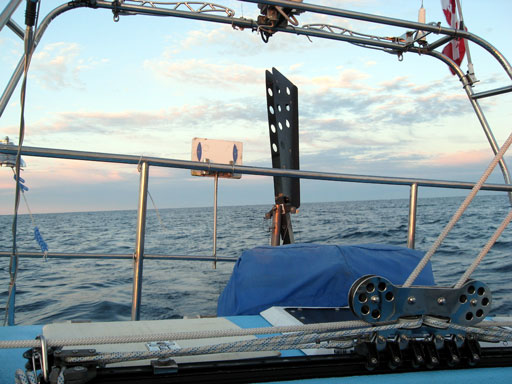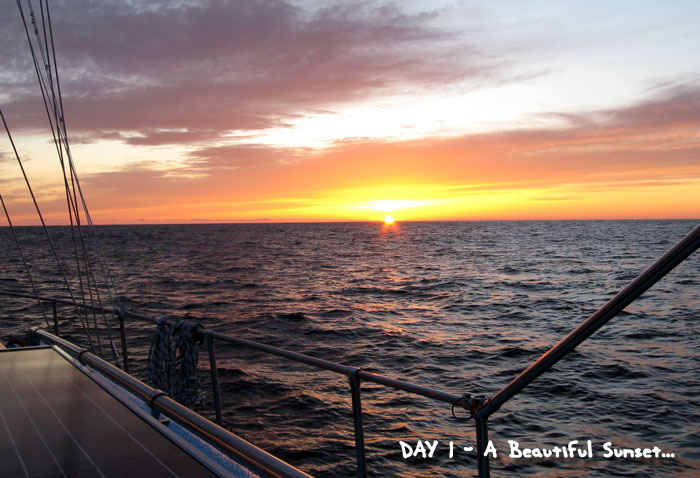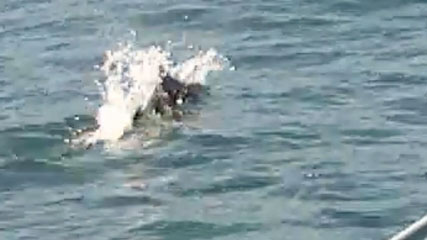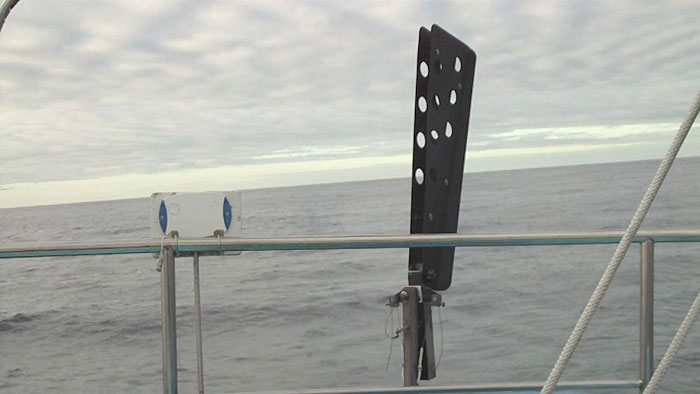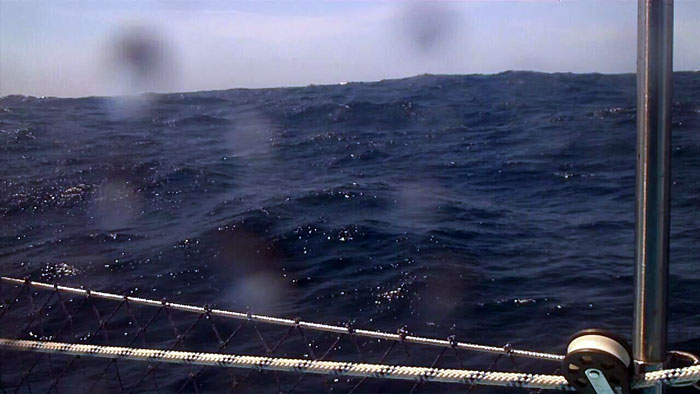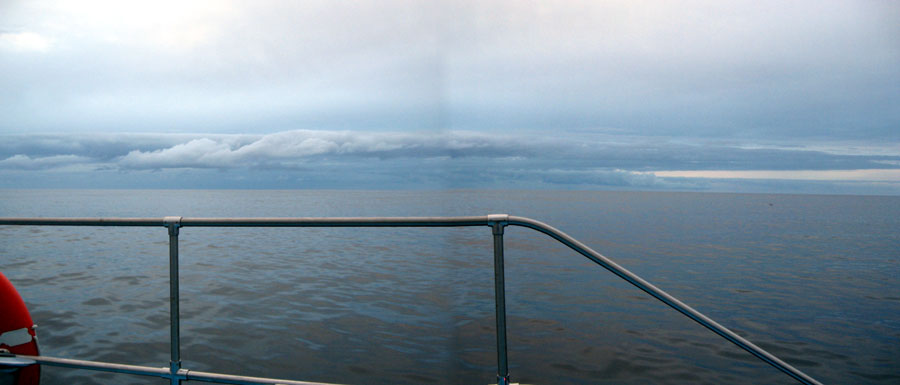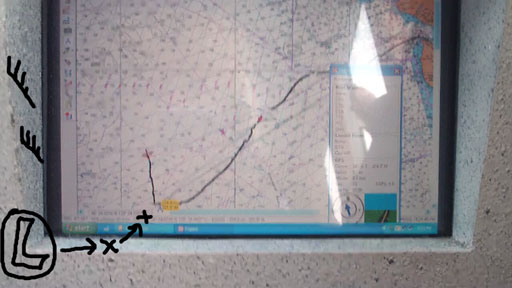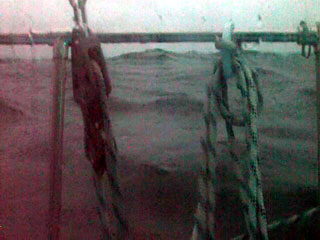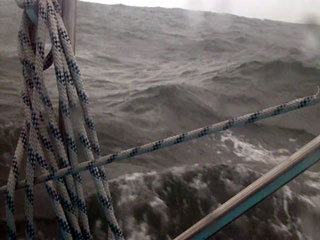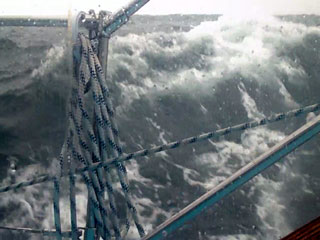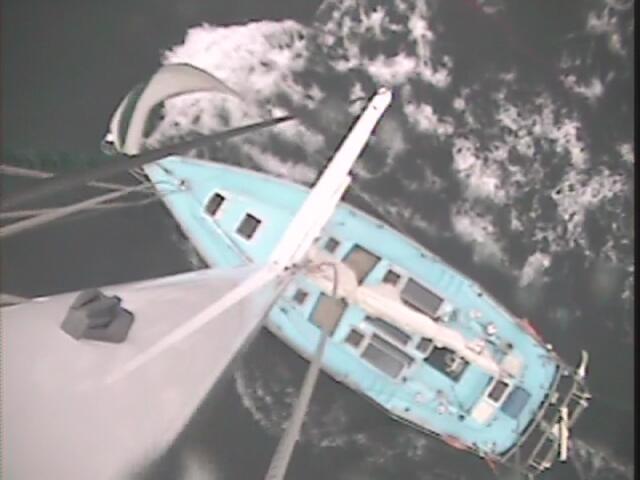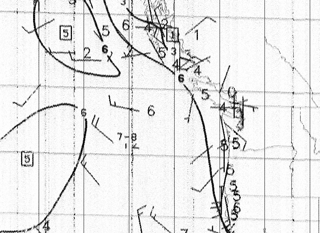| After thoughts:
The word "Karma" has really come into play several
times over the past few days we've been back. It means that perhaps this
passage wasn't meant to be, and there were many signs to state the now
obvious.
(1) Gena had noticed a leak coming from the transmission, denoted by a
pink fluid in a bowl she had place under it. We thought the seal was leaking
when in fact, it was just the temperature sensor, but a real concern in
opposing wind, lee shore, and big seas.
(2) After we made the 55 mile trip from Neah Bay to Port Angeles,
(another story below!) the starter packed it in. Gena had purchased an extra
clutch drive and we had a whole other starter as back-up, but the drive the
sent was the wrong one (slightly different) and the backup wouldn't
disengage. After several trips to Baxter, the parts dealer, and then to
Rudy's auto-repair (highly recommend if in PA!) it turned out the clearance
wasn't right and the original starter had to be completely rebuilt, then
shimmed up with 2 gaskets. Try to do that in the Marquesas! We'd have been
screwed.
(3) The Vetus Mushroom vent made one hell of a mess forward. The Jordan
drogue was completely submerged in salt water, as was some sensitive
electronics (my amp!) and parts. It turned out the large brass nut had
shattered, so we've replaced them with heavier pipe threaded galvanized
nuts. Those won't break! Not sure how easy that would have been to do
abroad, but the rope would've had to hold that on all the way there.
(4) The chain locker drain had been sealed by the last coat of
"blue-stuff" and masking tape, so when the chain hadn't been pulled in and
the plug not put in, salt water poured in on each crashing wave filling it
to the brim, and we couldn't figure out why it wasn't draining. This added a
lot of weight to the bow, so I was trying to bail it with a bucket and
measuring cup. Once back at anchor, most of the 350' of chain had to
be pulled out to expose the real problem.
(5) Little rust spots appeared, mostly on the forward cabin. Some of it
was from flakes of steel that had accumulated when we were drilling to
add fittings, but others were just missed spots during painting. They had
never shown up before because they were only exposed to fresh water (rain)
but really made a mess pretty quickly. I have since filled them all with
small dabs of acrylic paint but they'll need to be fixed in the future.
(6) Sea legs. We didn't acquire ours until the 6th day when we were just
coming back up to Cape Flattery. Then it took days to loose them again! The
rolling motion of the last 4 days meant we were queasy all of the time, and
couldn't eat much at all. Over the entire 6 days we had 3 half-bowls of
soup, a half a box of macaroni (first day), a few bits of ginger root, and a
tomato. Water and apple juice was all we could drink, and my mouth was so
dry (probably nerves) nothing could quench my thirst. Our tummies were
knotted up tight like a wrongly tied reef knot.
(7) Sleep. I think it's safe to say that during the last 3 days we only
had 2 or 3 minutes of sleep. Gena not being able to sleep is unheard of
since I have known her. The jerky rolling motion (lack of wind in the sails)
wouldn't let us sleep. The forward berth which had been comfortable, was now
a 2-G to 0-G environment. My head kept rolling back and forth, and if I laid
on my tummy, the pillow would rub my face raw and make my eye sore. Perhaps
a special pillow would do the trick? The aft berth became impossible as
going from 30+ degrees each side meant sliding down the bed then up to bonk
ones head. I ended up snoozing on the salon seat with my legs braced against
the end...but good thing I was in the bunk when we were knocked down or I'd
have been kissing the TV!
We (myself in particular) need to practice getting to sleep more. Being that
tired results in weakness on deck, cold, and bad decisions.
(8) Experience. Doing something forward on deck was terrifying to us in
those conditions, and the added lack of experience dealing with the sails,
halyards, sheets, safety harnesses, and where it all is in the dark made it
all the more intimidating. Maybe more experience would lower my
anxiety level too. One day/night my Mustang heavy survival suit felt like it
was trying to choke me all the time. That's intense anxiety, probably due to
being uncertain about the sea conditions to come, as well as the
inexperience.
More signs of our Dream's impending doom
showed up later.
The firewire on my computer turned out to be intermittent, that was how we
ended up missing several important weather faxes. Gena's weather fax machine
was going through paper with those damned NAVTEX reports like toilet paper
in a subway washroom, so we had shut it off.
I projected our position would be around 10ºN by now ( June 25th) and there
are 2 hurricanes (Celia-130kts/seas 35 feet, Darby-85kts/seas 22 feet) right
in the area we would be right now! We would have had to boogie through under
power and sail to avoid the un-navigable areas, but would the engine have
started?
I had a gut feeling we were leaving too late 3 weeks before and the
hypothetic voyages I had done using weather charts through May were both
successful....so luck had to run out right?
Even though we're in the end of an El Nino, the weather patterns this year
have been unusual indeed. The constant string of lows coming off of a
stationary front stretching half way across the Pacific is unusual, as is
the shape of the normally stable high pressure that resides off the west
coast. Everyone we know across Canada has been telling us how unusual
the weather has been this year. It should have been a warning. We ignored
it.
I feel we were dealt a tough blow on our first
blue water experience, but we made the right decision because of it, so
we're glad it turned out the way it did. We could've been 2000 miles out
when all this happened instead of 250. That certainly wouldn't have been
good!
Even after we returned to Roche Harbor at the
US San Juan Island, we had learned even more lessons thanks to mother
nature.
|
